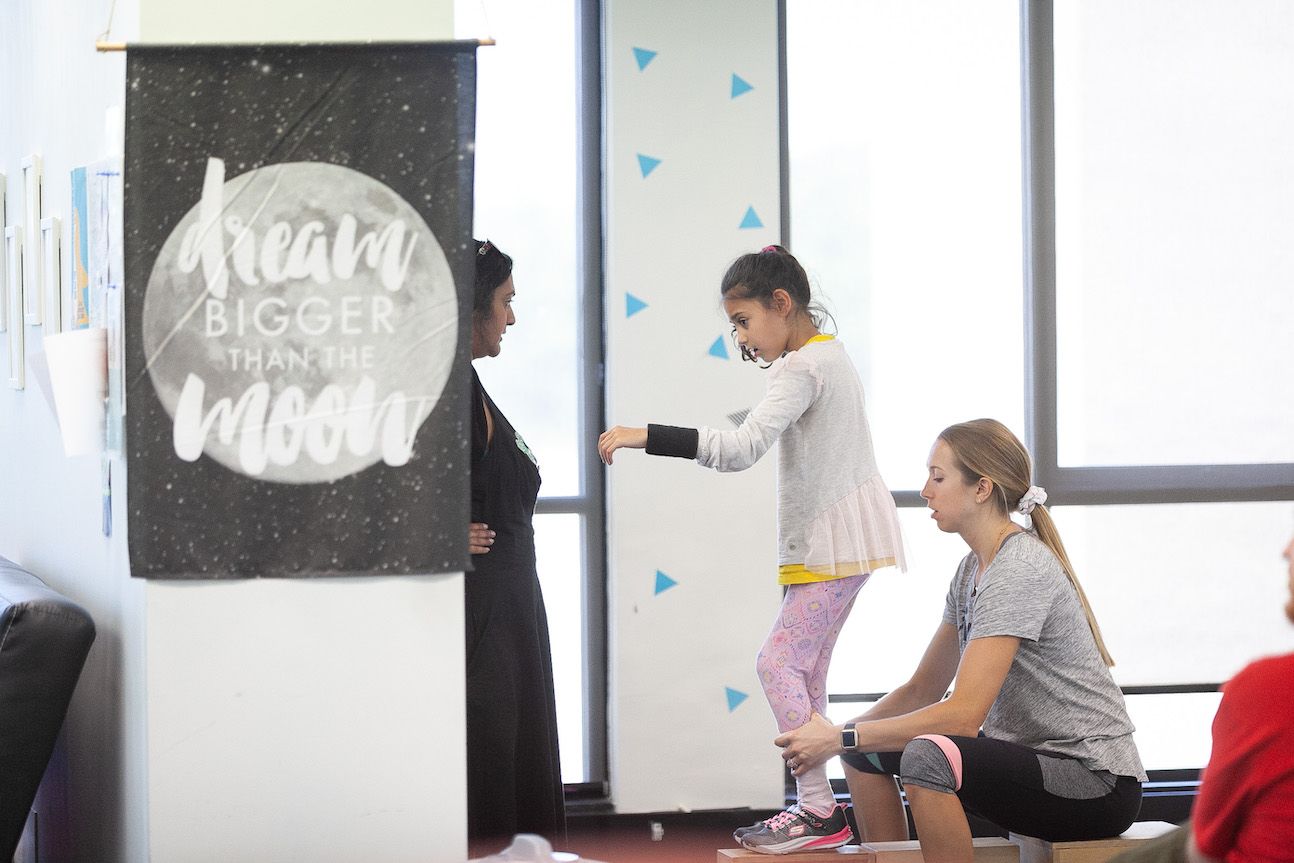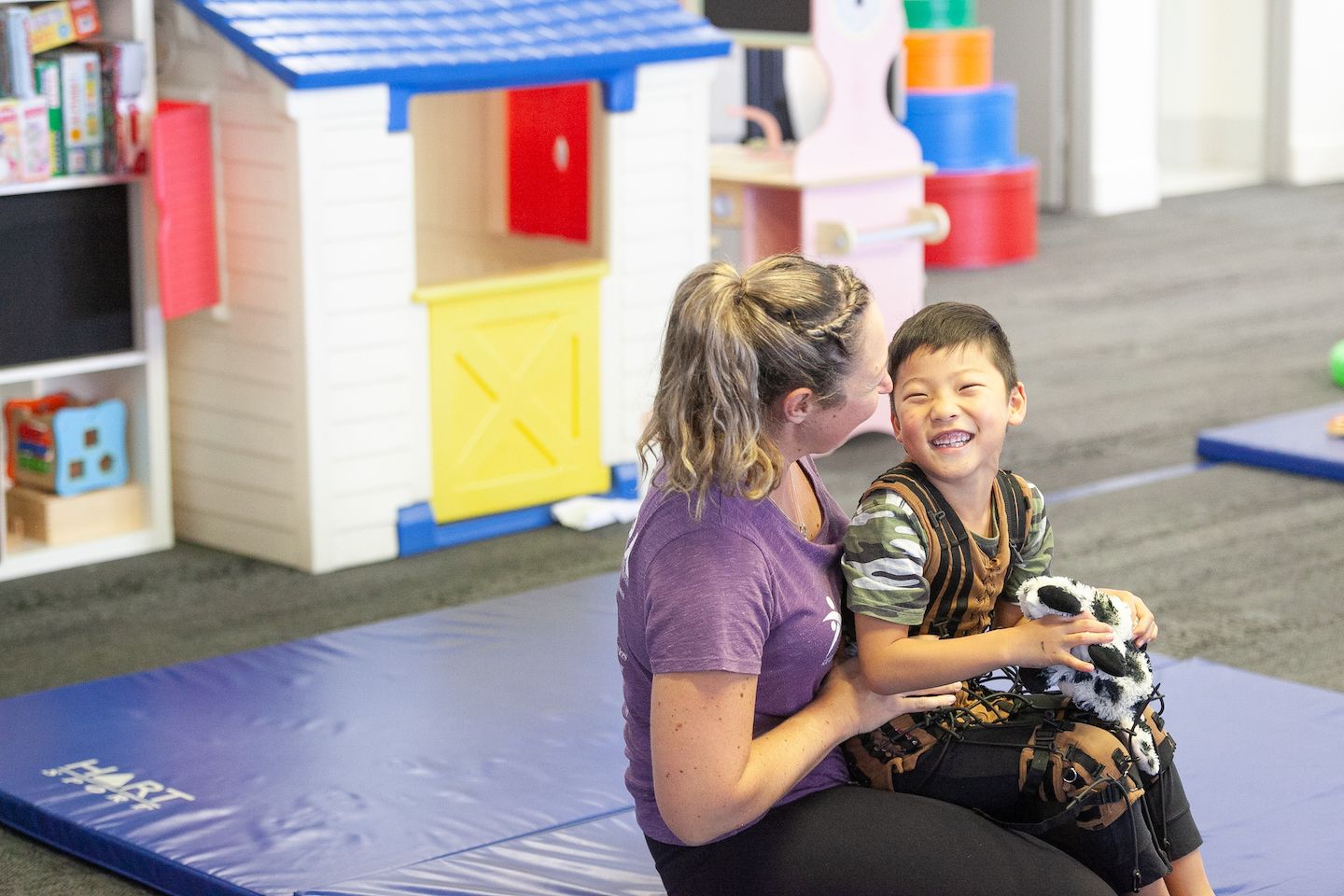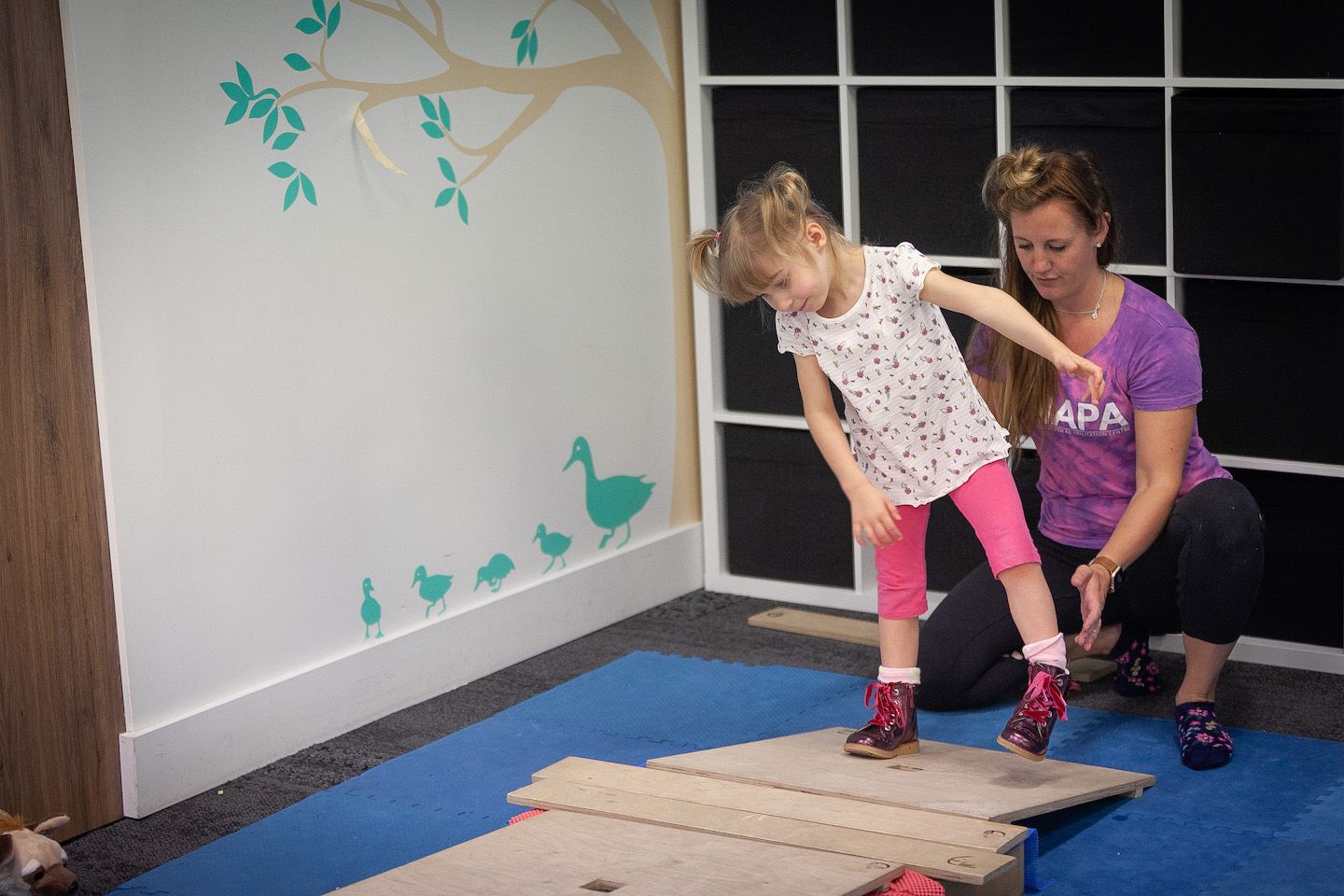NAPA Centre: How Lynette LaScala turned her son’s near death into a two country, three centre pioneer of intensive therapy
Cliniko customer, NAPA (Neurological and Physical Abilitation) Centres share how their founder, Lynnette LaScala, turned her son's near-death into a two country, four practice pioneer of children's intensive therapy with a two-year waiting list.
Kate Hunter·

Lynette LaScala was pregnant with her second child when her son Cody (age one) crawled out a sliding door and into the family pool. Cody went from a coma to a semi-comatose state over the next six months, and doctors gave Lynette and her husband a very poor diagnosis. They were told they should leave the hospital to go on with their lives. Cody was still alive, and leaving him was never an option.
Cody was diagnosed with Cerebral Palsy. When he was 18 months old, and after hearing time and time again that there was no hope for him, Lynette’s research to find an intensive home therapy program led her and her husband to Philadelphia to The Institutes for the Achievement of Human Potential. It was here that they were shown how to do a home program which would begin to reprogram Cody’s brain. Cody’s progress had plateaued after several years but it was then that Lynnette discovered the Euromed Rehabilitation Center in Mielno, Poland. Lynette and Cody made nine trips there, and Cody would gain 6-12 months of progress each time. This experience led to Lynette becoming the US Parent Representative for the centre. She traveled from city to city spreading the word to doctors, parents, and caregivers on what intensive therapy entailed, and how it changed her son’s life.
The beginning of NAPA
Five years later, in 2007, another parent Lynette knew was offered financial backing to start an intensive therapy clinic in Los Angeles, California. Lynette left her job as an educator to become the marketing manager for the clinic. One year later she was told they were going to be closing the doors. All the families she had been working with from around the US, who’d scrapped and saved for the therapy and travel costs, were going to be arriving to locked doors - with no refunds.
Despite the US financial crisis, Lynette’s passion to give children and their families the support and hope that her son and her family had experienced was her drive to bootstrap the centre and keep its doors open. Lynette lived in a studio apartment for the next six years while she and her younger son, Bryan (NAPA COO) grew the organisation. This became the first Neurological and Physical Abilitation Centre.
The Los Angeles NAPA Centre began with four physiotherapists. A year later, Lynette and Bryan hired an Occupational Therapist (OT). However, it was not until a travelling session in which an Occupational Therapist was on staff did Lynette discover how valuable it was to have an OT on board.
We were treating a child with CP (Cerebral Palsy) and ASD (Autism Spectrum Disorder). Our OT worked with our Physiotherapist focusing not only on the physical impairments but also on the sensory issues. This child [had been] using a walker for almost 2 years and left walking on his own. We used to call him our little Koala. If you picked him up he held you so tight as he didn’t know if he was an inch off the ground or on a 5 story building. From here, the true ‘multi-disciplinary team’ was formed, and we have structured the way we do therapy around this since.

Intensive therapy session at NAPA.
Growing the business
In February 2016, NAPA’s Sydney clinic was opened, driven by two-year waitlist at the LA clinic, and the fact that so many Australian families were travelling to Los Angeles. ‘It was heartbreaking to have to say no to so many families as we just couldn’t fit them in [in L.A.]—the only solution was to open a clinic ‘down under’,’’ says Lynette.
The opening of the centre in Sydney was followed by a third clinic in Boston (USA), in 2018, to accommodate the large volume of enquiries coming from the East Coast of America. Only a year later, NAPA have announced they are to open their fourth clinic in October 2020 - in Austin, Texas (USA).
Opening a new clinic on the other side of the world (or other side of the country!) from the original centre brought unique challenges of its own.
‘The challenges are always the potential to lose control when your business is operating in another country and you can’t be as involved as you would like. But in preparation for setting up the Sydney clinic, the LA team did a great job in putting together all the procedures and policies of what had made LA so successful, so it could be rolled out effectively in all future clinic openings such as Sydney and Boston,’ says Australian Managing Director, Paul Pozzobon.
With the support of Sydney-based clients, NAPA Sydney became a reality. ‘The senior roles in the Sydney Clinic were entrusted to NAPA parents who had a long history with NAPA, and knew what we were trying to achieve here in Sydney,’ shares Paul. Parents taking on these roles gave Lynette and her team the local expertise they needed to choose the centrally located, reasonably priced Lane Cove building with its easy access and calming treetop outlook over Lane Cove National Park.
The NAPA centre fitouts suit most locations as the majority of the floorspace is an open-gym environment. ‘We had minimal fit out works to complete as we took on a space that had everything that we needed. The small works required were actually done by one of our therapist’s husbands!’ says Paul.
Expanding the centres meant expanding the therapy team, Paul, explains how they maintain their standards. ‘The NAPA business is built on the provision of quality therapy services which requires a lot of training an investment into our therapy team. So whilst we have expanded quite quickly to meet the demand, team members are carefully selected and put through months of up front training before they are NAPA-ready.’

Hiring the right team
From humble beginnings (“When starting a new clinic, be prepared to be the receptionist, scheduler, biller, marketing rep, cleaner, errand person, janitor and plumber!” says Lynnette), NAPA centres now employ a total of 84 people (18 administrators, 66 therapists). 19 are in Sydney (AU), 51 are in Los Angeles (USA), and 14 in Boston (USA).
The NAPA Centre team members undertake a comprehensive, up-front training program followed up by ongoing coaching and development. Candidates must go through multiple interviews with departmental leads, as well as the Managing Director and Clinic Rehab Director. ‘[We look for] the ‘E’ qualities—enthusiasm for the role, empathy for the children and families, a thirst for education (continual learning and development), a strong worth ethic, and to be an entertainer! We also try and get each candidate to spend some time with our therapists on the clinic floor to gain a full appreciation of just how different and wonderful NAPA is.’ says Paul.
Don’t rush - take your time to get all elements of the clinic right as you don’t want to have any weak links once you are open and operational.
— Paul Pozzobon
On the day-to-day
Things have changed quite drastically since the beginning. ‘Lynette literally used to go around the neighbourhood and post flyers everywhere,” says Paul of those early days. ‘We would hold open days once a month where families would come to the clinic and we would do a presentation on our services, and give free assessments. Lynette also contacted local doctors and would take them cookies and brochures! In the beginning it was all done by Lynette—true multi-tasking!’.
Since then, the NAPA has grown largely organically, on reputation and word-of-mouth. Around 30% of new clients find NAPA through search engines, Instagram, and Facebook.
Therapists spend their days on the floor, treating clients. ‘All going well, most therapists will be on the floor treating all but one hour of the day.’ says Paul. ‘The admin team book the schedule, and communicate with the parents. Appointment reminders are sent out automatically via email through Cliniko.’
Essential to the day-to-day operations of the NAPA centres is adaptability and flexibility. ‘Working with kids with disabilities means that we have to be ready for the unexpected,’ says Paul. ‘The tidy schedule at the start of the day can look like a mess by the end of the day and no two days are ever alike!’
Part of the NAPA team’s ongoing work is looking for new developments in the world of the therapies. ‘We are proud to have some very unique therapies that most clinics do not offer including CME, Spidercage, Neurosuit and Vital Stim therapies. We will continually seek to integrate the best therapies and approaches to what we do, in the very best interests of our clients,’ says Paul.

NAPA therapist with a child during CME therapy session
Where to next?
NAPA is hopeful they will continue to open new centres on a demand-basis in the coming years. Paul says, ‘We have long waiting lists for people in all parts of the world in need of our services. We will only open additional clinics, though, when we are fully prepared, and have an outstanding team to open with.’
We will never stand still, we are always looking to grow, learn, and improve what we do and we feel others should be the same!